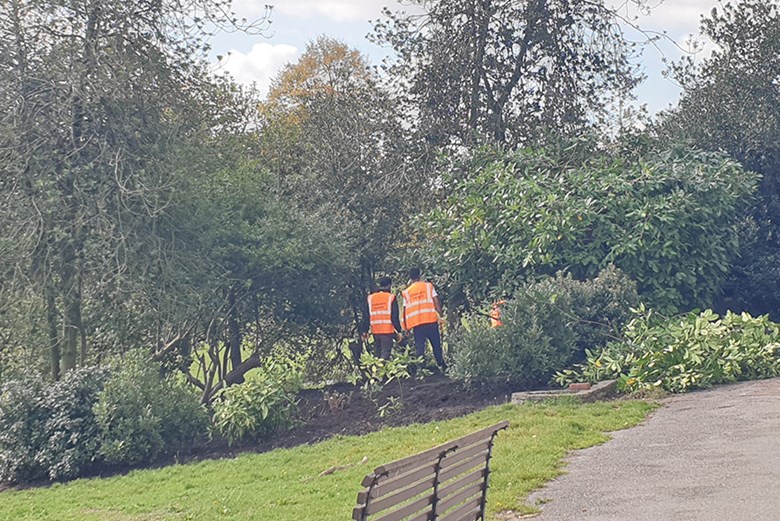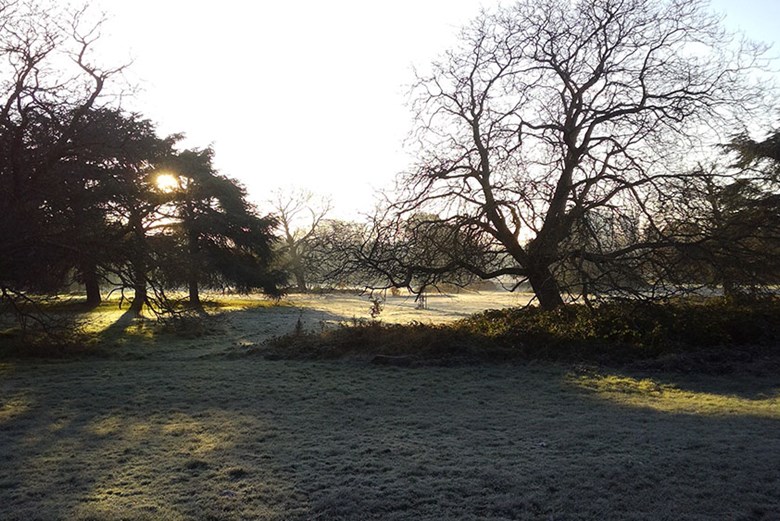In this blog series, we'll be interviewing some familiar faces around Gunnersbury. Next up is Ian Arthur, Project Manager for the London Community Rehabilitation Company
They’re often to be seen around the park in their high vis jackets, clearing and cutting back flower beds and pathways. The service users supervised by Ian Arthur of the London Community Rehabilitation Company are doing their community service and making a difference to the good #ForTheLoveofGunnersbury
What kind of people do you work with?
It’s a mix of males and females. They might have been convicted for something such as driving offences, assault, etc., and they might be doing anything from 40 to 340 hours of community service because of their offence. Some of the service users have a string of have convictions others will be there first time and only time. They did something and got on the wrong side of the law. With service users it’ll suddenly click that they can’t go on like this, then they may have to change friends, places or habits. This could be going from youth side to adult, marriage, children, employment, housing or holidays to places like the U.S., even age. Either way, they’ll all have undergone full risk management following interviews with their probation officer before they are assigned to the park project.

What happens when people come to Gunnersbury to do their community service?
They’ve usually been allocated one, two or three days in the week to work in the park. Most of the time I have around six people and I meet them at the gate at about 9.30am and we go through the rules. If everything is okay, I’ll allocate them a task and they’ll start work. Some have particular skills such as gardening or painting and that’s really useful.
What kind of reaction do you get from the people you work with?
You get a variety of attitudes – some really don’t care but others are just pleased to be outside in a beautiful park. The trick is to talk to each one of them and engage with them as a person. You usually find that they’ll open up during the day and their attitudes change. A few will just turn their back and leave at the end of the day without saying anything but most will look at what they’ve been working on and tell me that actually they’ve really enjoyed it. You can tell that they’re pleased with a job well done. That’s very satisfying – especially if they haven’t had that experience before.
What about other visitors to the park and other park employees?
They’ll sometimes ask questions about who we are. Visitors are usually very friendly and encouraging and quite often interested in what we’re doing and why we’re doing it. They’re pleased to see the park being used for this kind of activity. We also work closely with Chris Ellis, Gunnersbury's Park Manager, and the gardening team to identify what needs to be done and how we can support their work by clearing out flower beds or wooded areas.

Just being outside must help?
It’s very therapeutic for offenders – you might find someone just standing there looking in amazement at the swans flying across the oval pond, for instance as I do. During the day they often start to ask questions about the different types of plants and shrubs that they’re working with. Some have never seen a worm before. Working with nature in the open air brings out the best in most. They bring what they’ve learnt and what they’ve done into their everyday lives. They might think of doing some gardening for the parents, perhaps, and I’ve even had a few say
“I think I could do this for a living.”
Something about the experience just clicks. No one is ever a lost cause, I believe, there’s always hope. Gunnersbury Park is a learning park for everyone. I'd love to see more information on the types of ducks, swans etc. on and around the round pounds or the names of plants in the broader or rockery, or wild life within the park. This could allow children and older to spend more time learning at the park and then learn more via the internet, libraries, or at home. If you can nurture an interest then it can only benefit the park.
